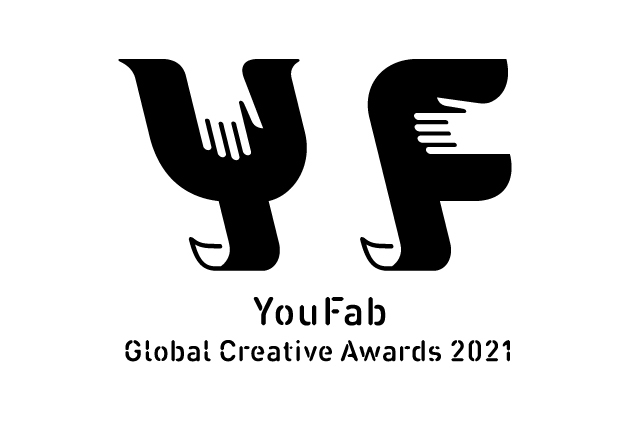-
Work Title
Haptics of Cooking
-
Work Title(EN)
Haptics of Cooking
-
Please describe the concept of your artwork in 2000 words.
Seeing might be believing. Ironically, non-seers have sharper senses and are attuned to the environment much more than those who see. Naturally, we fear losing sight as we know the importance of vision. Boey designed a series of cooking tools to promote haptic flexibility and unpack the fear of not-seeing and not-knowing in what might be the most dangerous domestic space—the kitchen. Only from the perspective of sight, these tools might seem dysfunctional. However, it introduces a new side of functionality through the use of haptic sense. The monopoly of vision is questioned through its absence and the tools bring to light that "seeing" is not only visual.
For measuring liquids, the two styles of glass beakers have small holes in the side. When blocked with a fingertip, the user can feel when the liquid volume reaches a specific level.
The wooden cutting board considers how it is possible to keep everything that has been cut, neatly on the board. A wide groove creates a moat around the edge into which cut food can be pushed. The circular cutting board is 42cm in diameter. A gap at the base of the cutting board forms a convenient place to tuck the knife out of the way when not cutting. The knife can then be grabbed again easily without the worry of accidentally touching the blade.
The stainless steel knife is short and compact, with a length of just 18cm. It is easy to hold, well balanced in weight, and allows the user to get close to the food to stay in control.
Without sight, locating a hot cooking pot is not so easily done by simply reaching out and touching it. To create a safer system, an alternative pot lid is created from sauna wood. It heats slowly and remains comfortable to touch. The shape is concave and also allows food to be placed onto it. By tilting the lid, the food on top can be effortlessly dropped into the pot beneath.
The kitchen tools are not only for the visually- impaired but can make everyone experience cooking without sight and get the feel for haptic navigation and information processing, hands-on. By presenting cooking oriented by touch, the project aims to shorten the distance between the seeing and people who have no or diminished vision. -
Please describe the concept of your artwork in 2000 words. (EN)
Seeing might be believing. Ironically, non-seers have sharper senses and are attuned to the environment much more than those who see. Naturally, we fear losing sight as we know the importance of vision. Boey designed a series of cooking tools to promote haptic flexibility and unpack the fear of not-seeing and not-knowing in what might be the most dangerous domestic space—the kitchen. Only from the perspective of sight, these tools might seem dysfunctional. However, it introduces a new side of functionality through the use of haptic sense. The monopoly of vision is questioned through its absence and the tools bring to light that "seeing" is not only visual.
For measuring liquids, the two styles of glass beakers have small holes in the side. When blocked with a fingertip, the user can feel when the liquid volume reaches a specific level.
The wooden cutting board considers how it is possible to keep everything that has been cut, neatly on the board. A wide groove creates a moat around the edge into which cut food can be pushed. The circular cutting board is 42cm in diameter. A gap at the base of the cutting board forms a convenient place to tuck the knife out of the way when not cutting. The knife can then be grabbed again easily without the worry of accidentally touching the blade.
The stainless steel knife is short and compact, with a length of just 18cm. It is easy to hold, well balanced in weight, and allows the user to get close to the food to stay in control.
Without sight, locating a hot cooking pot is not so easily done by simply reaching out and touching it. To create a safer system, an alternative pot lid is created from sauna wood. It heats slowly and remains comfortable to touch. The shape is concave and also allows food to be placed onto it. By tilting the lid, the food on top can be effortlessly dropped into the pot beneath.
The kitchen tools are not only for the visually- impaired but can make everyone experience cooking without sight and get the feel for haptic navigation and information processing, hands-on. By presenting cooking oriented by touch, the project aims to shorten the distance between the seeing and people who have no or diminished vision. -
Work Specification
Cutting Board: 42 cm x 42 cm, Wood
Knife: 18 cm x 4 cm x 1.5 cm, Stainless Steel
Tall Measuring Cup: 5.4 cm x 5.4 cm x 12 cm , Glass
Low Measuring Cup: 6.5 cm x 6.5 cm x 9.6 cm, Glass
Pan Lid: 24 cm x 24 cm x 3.5 cm, Wood -
Work Specification(EN)
Cutting Board: 42 cm x 42 cm, Wood
Knife: 18 cm x 4 cm x 1.5 cm, Stainless Steel
Tall Measuring Cup: 5.4 cm x 5.4 cm x 12 cm , Glass
Low Measuring Cup: 6.5 cm x 6.5 cm x 9.6 cm, Glass
Pan Lid: 24 cm x 24 cm x 3.5 cm, Wood -
Media CoverageURL
-
Video URL
https://vimeo.com/459346711
-
Your OfficialURL (Website, Instagram, Facebook)
boeyw.com
-
Please describe how your work relates to the theme of the special prize.
- 85


